Abstract
In this paper, it is argued that oral contraceptives should be available without prescription. Prescription status entails heavy costs, including the dollar, time, and psychological costs of visiting a physician to obtain a prescription, the financial and human costs of unintended pregnancies that result from the obstacle to access caused by medicalization of oral contraceptives, and administrative costs to the health care system. After a review and evaluation of the reasons for strict medical control of oral contraceptives in the United States, safety concerns anticipated in response to the proposal discussed here are addressed. Also, concerns that prescription status is necessary for efficacious use are evaluated. It is concluded that neither safety nor efficacy considerations justify prescription status for oral contraceptives. Revised package design and patient labeling could allow women to screen themselves for contraindications, to educate themselves about danger signs, and to use oral contraceptives safely and successfully. Several alternatives to providing oral contraceptives by prescription with current package design and labeling and selling them over the counter are suggested; the proposals discussed would make these safe and effective contraceptives easier to obtain and to use.
Full text
PDF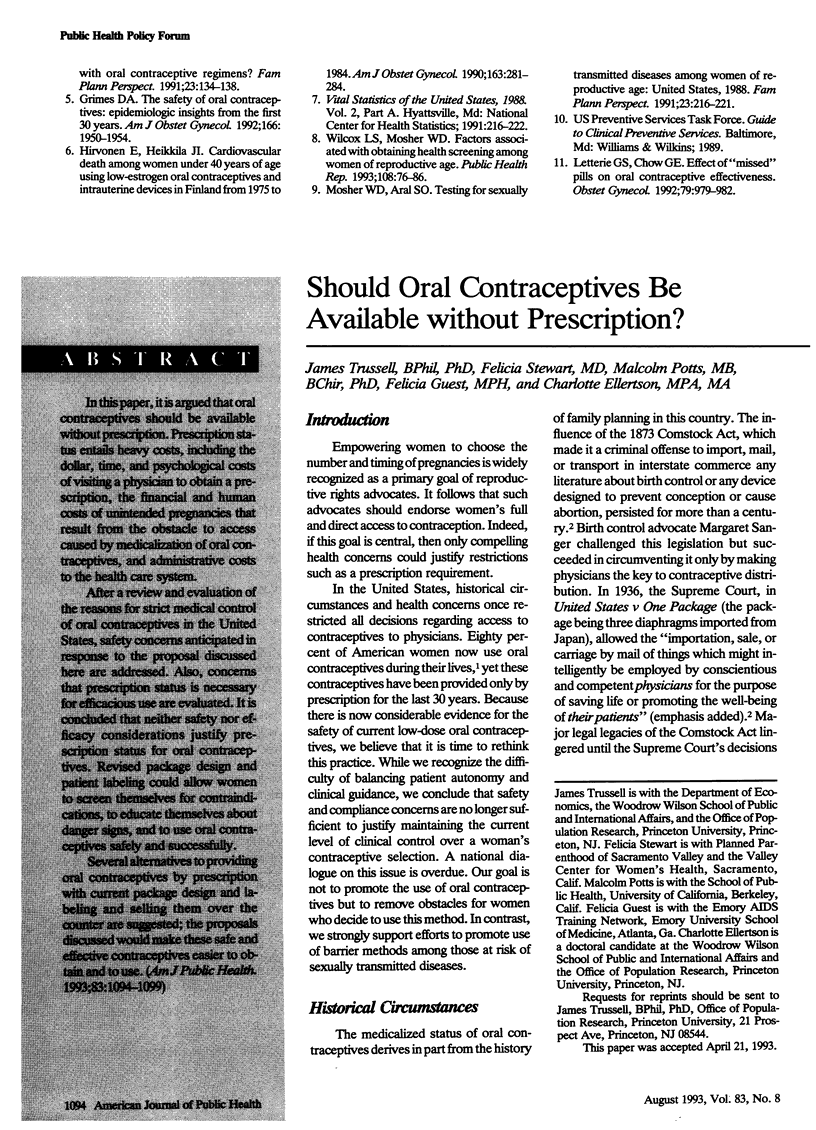
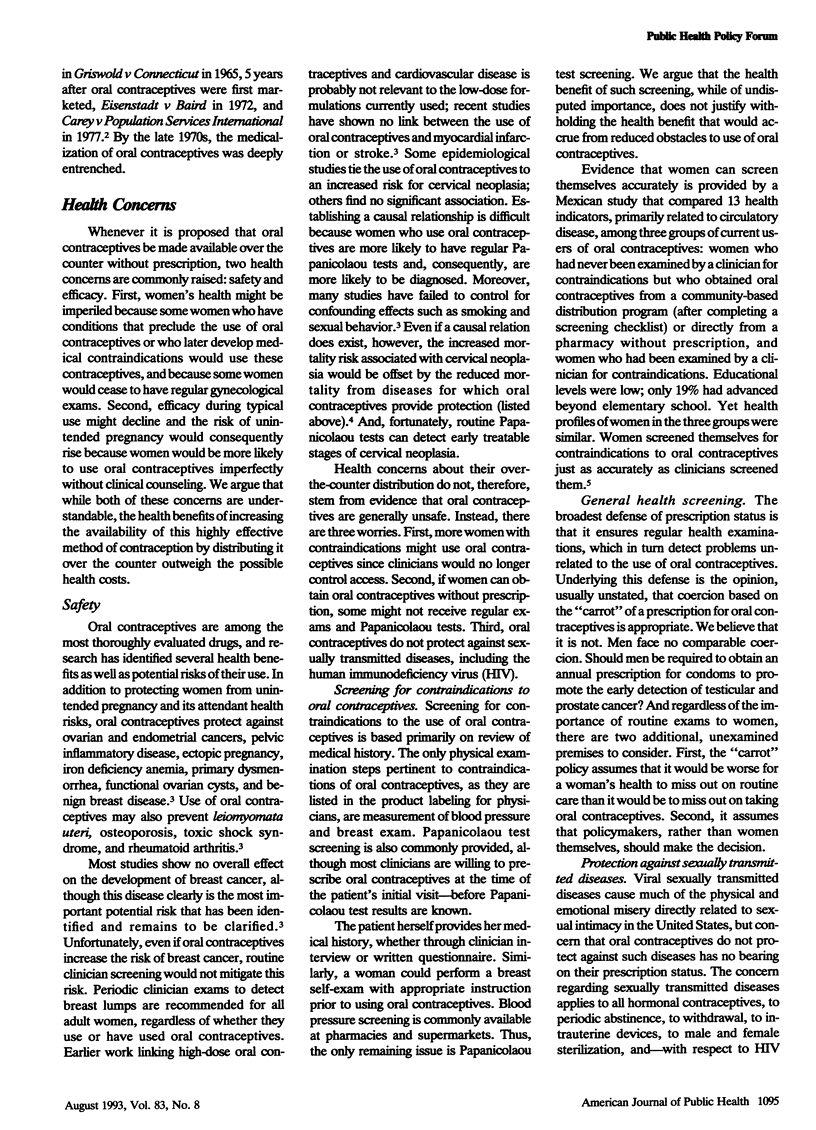
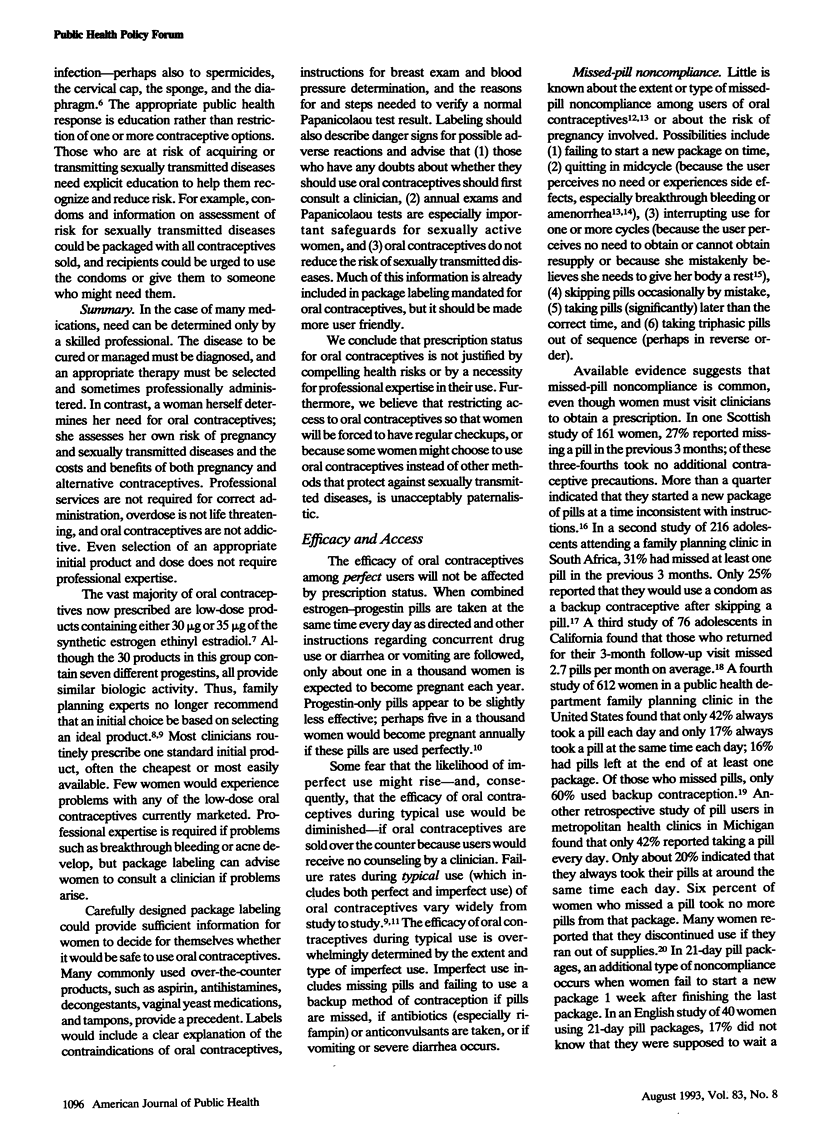
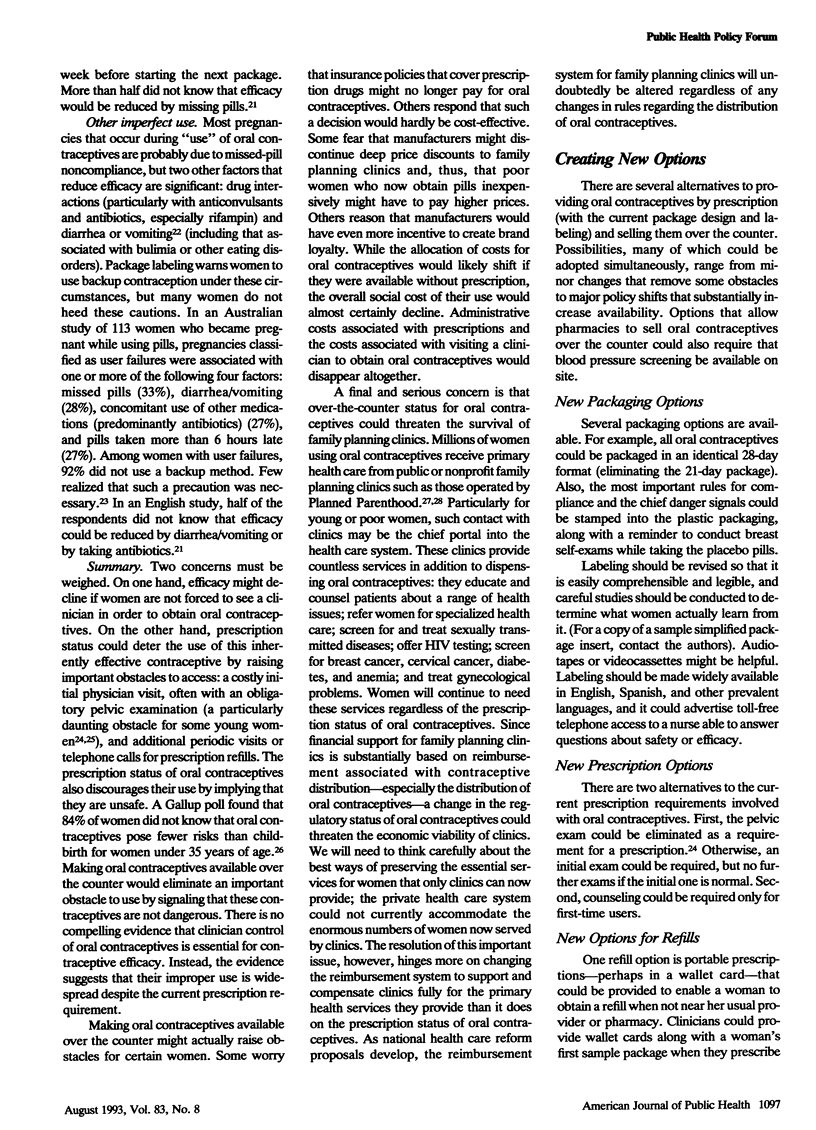

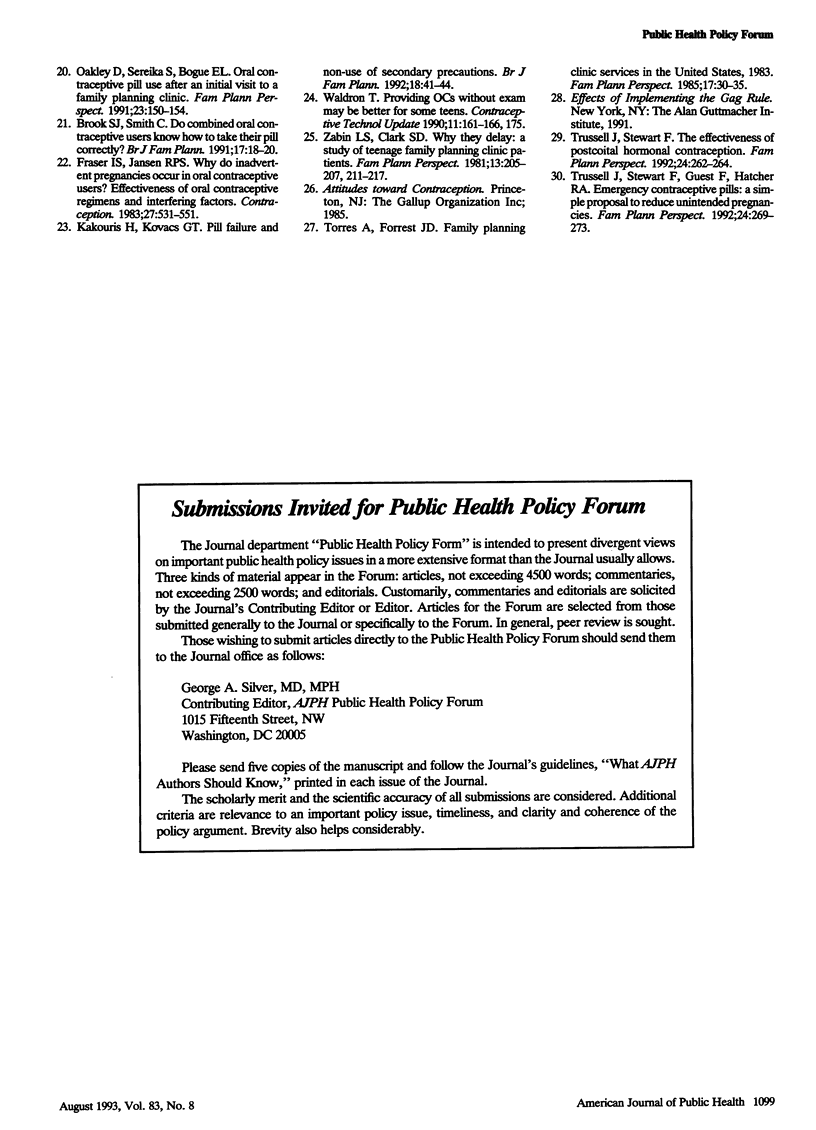
Selected References
These references are in PubMed. This may not be the complete list of references from this article.
- Balassone M. L. Risk of contraceptive discontinuation among adolescents. J Adolesc Health Care. 1989 Nov;10(6):527–533. doi: 10.1016/0197-0070(89)90016-8. [DOI] [PubMed] [Google Scholar]
- Cates W., Jr, Stewart F. H., Trussell J. Commentary: the quest for women's prophylactic methods--hopes vs science. Am J Public Health. 1992 Nov;82(11):1479–1482. doi: 10.2105/ajph.82.11.1479. [DOI] [PMC free article] [PubMed] [Google Scholar]
- Coker A. L., Harlap S., Fortney J. A. Oral contraceptives and reproductive cancers: weighing the risks and benefits. Fam Plann Perspect. 1993 Jan-Feb;25(1):17-21, 36. [PubMed] [Google Scholar]
- Dawson D. A. Trends in use of oral contraceptives--data from the 1987 National Health Interview Survey. Fam Plann Perspect. 1990 Jul-Aug;22(4):169–172. [PubMed] [Google Scholar]
- Finlay I. G., Scott M. G. Patterns of contraceptive pill taking in an inner city practice. Br Med J (Clin Res Ed) 1986 Sep 6;293(6547):601–602. doi: 10.1136/bmj.293.6547.601. [DOI] [PMC free article] [PubMed] [Google Scholar]
- Fraser I. S., Jansen R. P. Why do inadvertent pregnancies occur in oral contraceptive users? Effectiveness of oral contraceptive regimens and interfering factors. Contraception. 1983 Jun;27(6):531–551. doi: 10.1016/0010-7824(83)90019-7. [DOI] [PubMed] [Google Scholar]
- Goldstuck N. D., Hammar E., Butchart A. Use and misuse of oral contraceptives by adolescents attending a free-standing clinic. Adv Contracept. 1987 Dec;3(4):335–339. doi: 10.1007/BF01849291. [DOI] [PubMed] [Google Scholar]
- Grimes D. A. The safety of oral contraceptives: epidemiologic insights from the first 30 years. Am J Obstet Gynecol. 1992 Jun;166(6 Pt 2):1950–1954. doi: 10.1016/0002-9378(92)91394-p. [DOI] [PubMed] [Google Scholar]
- Hillard P. J. Oral contraception noncompliance: the extent of the problem. Adv Contracept. 1992 Oct;8 (Suppl 1):13–20. doi: 10.1007/BF01849447. [DOI] [PubMed] [Google Scholar]
- Hillard P. J. The patient's reaction to side effects of oral contraceptives. Am J Obstet Gynecol. 1989 Nov;161(5):1412–1415. doi: 10.1016/0002-9378(89)90706-0. [DOI] [PubMed] [Google Scholar]
- Oakley D., Parent J. A scale to measure microbehaviors of oral contraceptive pill use. Soc Biol. 1990 Fall-Winter;37(3-4):215–222. doi: 10.1080/19485565.1990.9988761. [DOI] [PubMed] [Google Scholar]
- Oakley D., Sereika S., Bogue E. L. Oral contraceptive pill use after an initial visit to a family planning clinic. Fam Plann Perspect. 1991 Jul-Aug;23(4):150–154. [PubMed] [Google Scholar]
- Torres A., Forrest J. D. Family planning clinic services in the United States, 1983. Fam Plann Perspect. 1985 Jan-Feb;17(1):30–35. [PubMed] [Google Scholar]
- Trussell J., Hatcher R. A., Cates W., Jr, Stewart F. H., Kost K. Contraceptive failure in the United States: an update. Stud Fam Plann. 1990 Jan-Feb;21(1):51–54. [PubMed] [Google Scholar]
- Trussell J., Kost K. Contraceptive failure in the United States: a critical review of the literature. Stud Fam Plann. 1987 Sep-Oct;18(5):237–283. [PubMed] [Google Scholar]
- Trussell J., Stewart F., Guest F., Hatcher R. A. Emergency contraceptive pills: a simple proposal to reduce unintended pregnancies. Fam Plann Perspect. 1992 Nov-Dec;24(6):269–273. [PubMed] [Google Scholar]
- Trussell J., Stewart F. The effectiveness of postcoital hormonal contraception. Fam Plann Perspect. 1992 Nov-Dec;24(6):262–264. [PubMed] [Google Scholar]
- Zabin L. S., Clark S. D., Jr Why they delay: a study of teenage family planning clinic patients. Fam Plann Perspect. 1981 Sep-Oct;13(5):205-7, 211-7. [PubMed] [Google Scholar]
- Zavala A. S., Perez-Gonzales M., Miller P., Welsh M., Wilkens L. R., Potts M. Reproductive risks in a community-based distribution program of oral contraceptives, Matamoros, Mexico. Stud Fam Plann. 1987 Sep-Oct;18(5):284–290. [PubMed] [Google Scholar]


